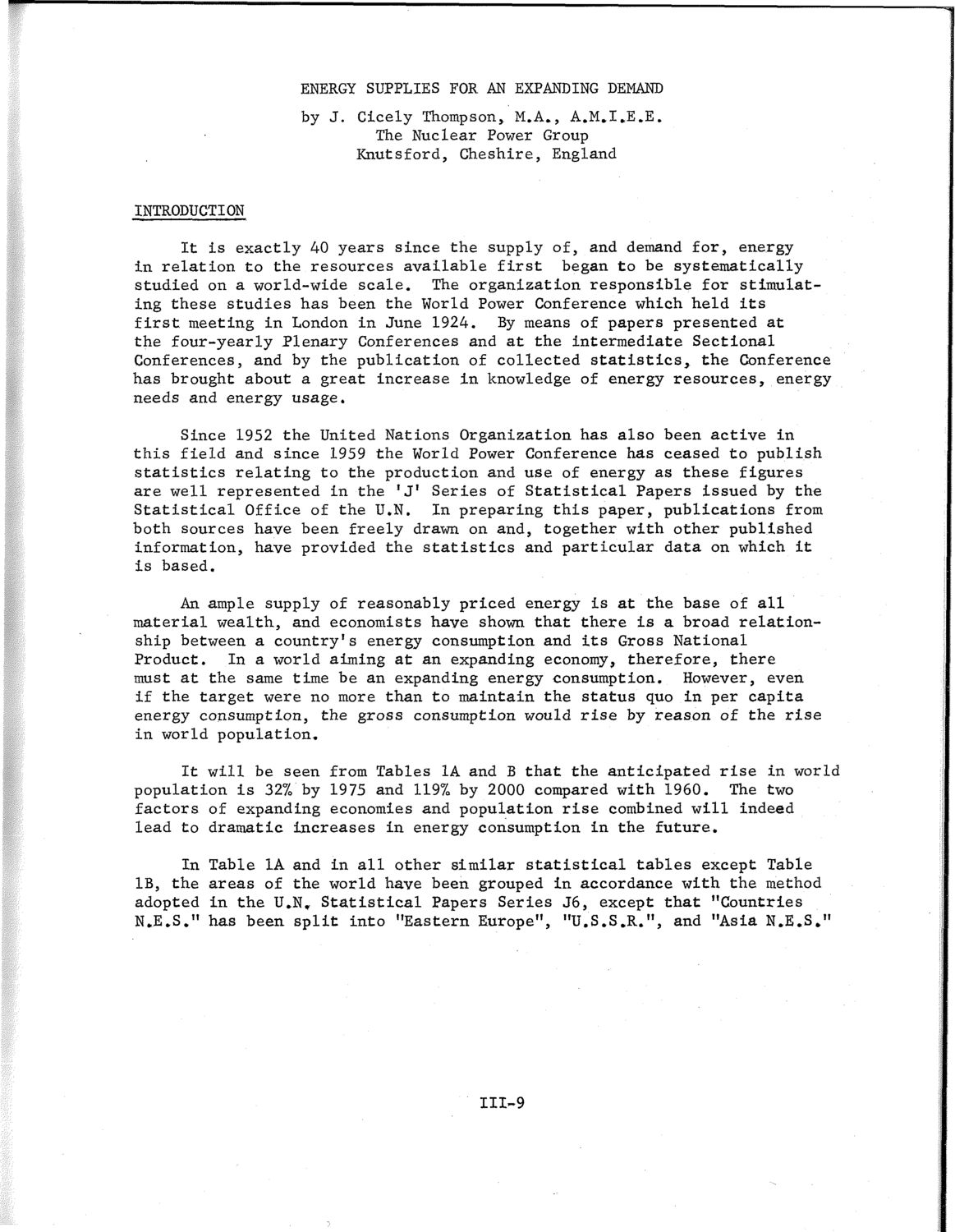| |
| |
Caption: SWE - Proceedings of the First International Conference of Women Engineers and Scientists
This is a reduced-resolution page image for fast online browsing.

EXTRACTED TEXT FROM PAGE:
ENERGY SUPPLIES FOR AN EXPANDING DEMAND by J. Cicely Thompson, M.A., A.M.I.E.E. The Nuclear Power Group Knutsford, Cheshire, England INTRODUCTION It is exactly 40 years since the supply of, and demand for, energy in relation to the resources available first began to be systematically studied on a world-wide scale. The organization responsible for stimulating these studies has been the World Power Conference which held its first meeting in London in June 1924. By means of papers presented at the four-yearly Plenary Conferences and at the intermediate Sectional Conferences, and by the publication of collected statistics, the Conference has brought about a great increase in knowledge of energy resources, energy needs and energy usage. Since 1952 the United Nations Organization has also been active in this field and since 1959 the World Power Conference has ceased to publish statistics relating to the production and use of energy as these figures are well represented in the 'J' Series of Statistical Papers issued by the Statistical Office of the U.N. In preparing this paper, publications from both sources have been freely drawn on and, together with other published information, have provided the statistics and particular data on which it is based. An ample supply of reasonably priced energy Is at the base of all material wealth, and economists have shown that there is a broad relationship between a country's energy consumption and its Gross National Product. In a world aiming at an expanding economy, therefore, there must at the same time be an expanding energy consumption. However, even if the target were no more than to maintain the status quo in per capita energy consumption, the gross consumption would rise by reason of the rise in world population. It will be seen from Tables 1A and B that the anticipated rise in world population is 32% by 1975 and 119% by 2000 compared with 1960. The two factors of expanding economies and population rise combined will indeed lead to dramatic increases in energy consumption in the future. In IB, the adopted N.E.S." Table 1A and In all other similar statistical tables except Table areas of the world have been grouped In accordance with the method in the U.N,, Statistical Papers Series J6, except that "Countries has been split into "Eastern Europe", "U.S.S.R.", and "Asia N.E.S." III-9
| |